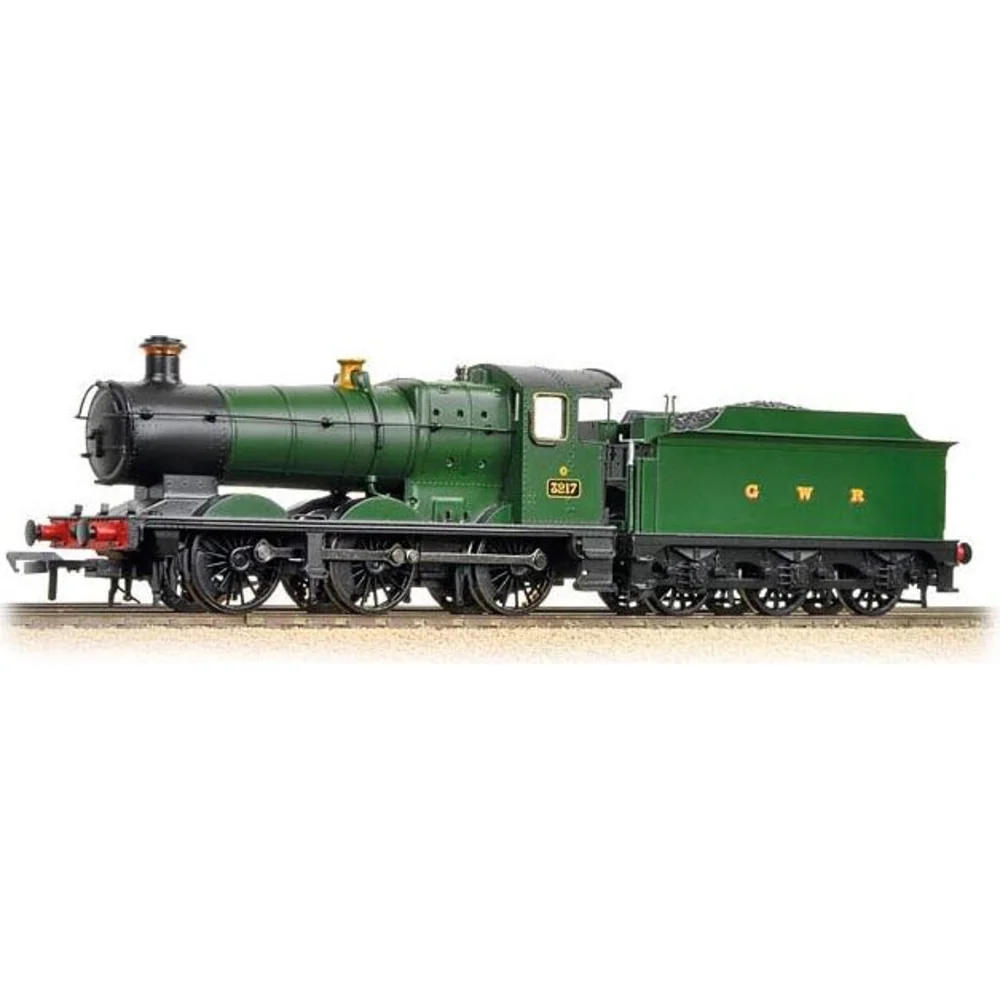Bachmann 32-310
Great Western Railway 2251 3217 Great Western Railway Green
Tooling
In 2007, Bachmann Branchline introduced a major upgrade to its GWR 2251 Class (Collett Goods) model. This revision replaced the earlier 1998 tooling and brought the locomotive up to modern standards for detailing and digital control. The prototype 2251s were designed by Charles Collett for the Great Western Railway in 1930 and served as versatile 0-6-0 tender engines for freight and secondary passenger duties. The 2007 tooling marked Bachmann’s transition to fully DCC-ready specifications and improved fidelity to the prototype.
Tooling Features
- Scale: OO gauge (1:76 scale).
- Construction: High-quality plastic bodyshell with separately fitted details, die-cast chassis for strength and weight.
- Detailing: Enhanced cab interior, fine rivet and boiler detail, separately applied handrails, accurate tender variations (Collett and Churchward types).
- Couplings: NEM pockets with tension-lock couplers.
Mechanical & Electrical
- Motor & Drive: Smooth-running motor with worm-and-gear drive to all driving wheels.
- Minimum Radius: Second radius curves (approx. 438 mm).
- Lighting: No factory-fitted lighting.
- Weighting: Die-cast chassis provides good traction for freight duties.
DCC Capability
- Fully DCC Ready with an 8-pin socket as standard.
- Some later releases included factory-fitted decoders marketed as “DCC On Board.”
Liveries Produced
The 2007 tooling appeared in a range of authentic liveries, including:
- GWR Green (pre-1947 styles).
- BR Black with Early Emblem (circa 1949–1957).
- BR Lined Green with Late Crest (post-1957).
Reviews & Commentary
The upgrade was widely praised for its improved accuracy and ease of DCC conversion. Reviewers highlighted the fine cab detail, better tender proportions, and smooth running performance. Compared to the earlier 1998 tooling, the 2007 version offered superior finish and modern digital compatibility. Minor criticisms included the absence of factory lighting and limited weathered options in initial runs.
Media & Social Media
The model has featured in numerous YouTube reviews and enthusiast forums, often commended for its reliability and suitability for branch line layouts. Videos showcasing sound-fitted versions and preserved prototype No. 3205 have reinforced its popularity among GWR modellers.
Interesting Notes
- The 2007 tooling represented Bachmann’s move toward its “Blue Riband” standard for steam locomotives.
- Variants included different tender types and occasional weathered finishes to reflect prototype diversity.
Class & Prototype
- Class: Great Western Railway 2251
- Traction: Steam
- Built: 1930-1948
- Total Built: 120
- Running Number: 3217
Operator & Livery
- Operator: Great Western Railway
- Livery: Green
- Era: 3 - The big 4 – LMS, GWR, LNER & SR
The Great Western Railway (1835-1947) was Britain's most innovative railway company, engineered by Isambard Kingdom Brunel with his revolutionary 7ft ¼in broad gauge system. Known affectionately as "God's Wonderful Railway" and the "Holiday Line," the GWR connected London Paddington with the West Country, Wales, and Birmingham through 3,800 miles of superbly engineered routes.
Renowned for its Brunswick green locomotives, chocolate and cream carriages, and engineering excellence centred at Swindon Works, the GWR pioneered advanced steam technology under chief mechanical engineers Daniel Gooch, George Jackson Churchward, and Charles Collett. The company's legendary locomotive classes—including Castle, King, Hall, and Manor—established performance standards that influenced British locomotive design for decades.
The only "Big Four" railway to retain its original identity through the 1921 grouping, the GWR maintained its distinctive corporate culture until nationalisation in 1947. Today, the company's engineering legacy lives on through extensive preservation efforts, heritage railways, and detailed model railway recreations that celebrate the finest traditions of British steam railway operation.
